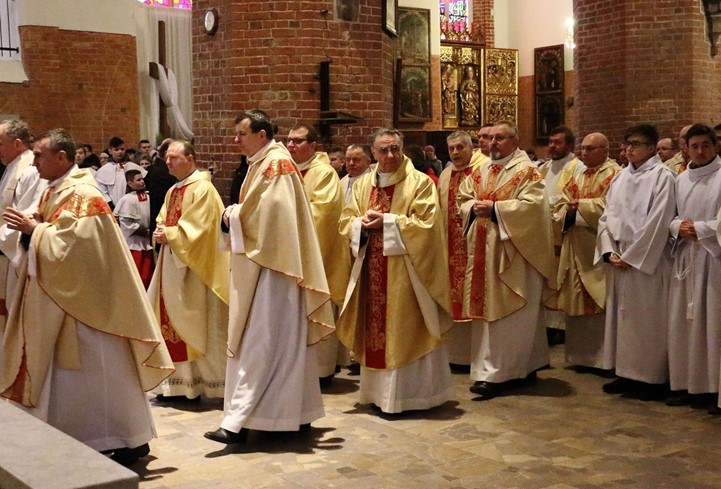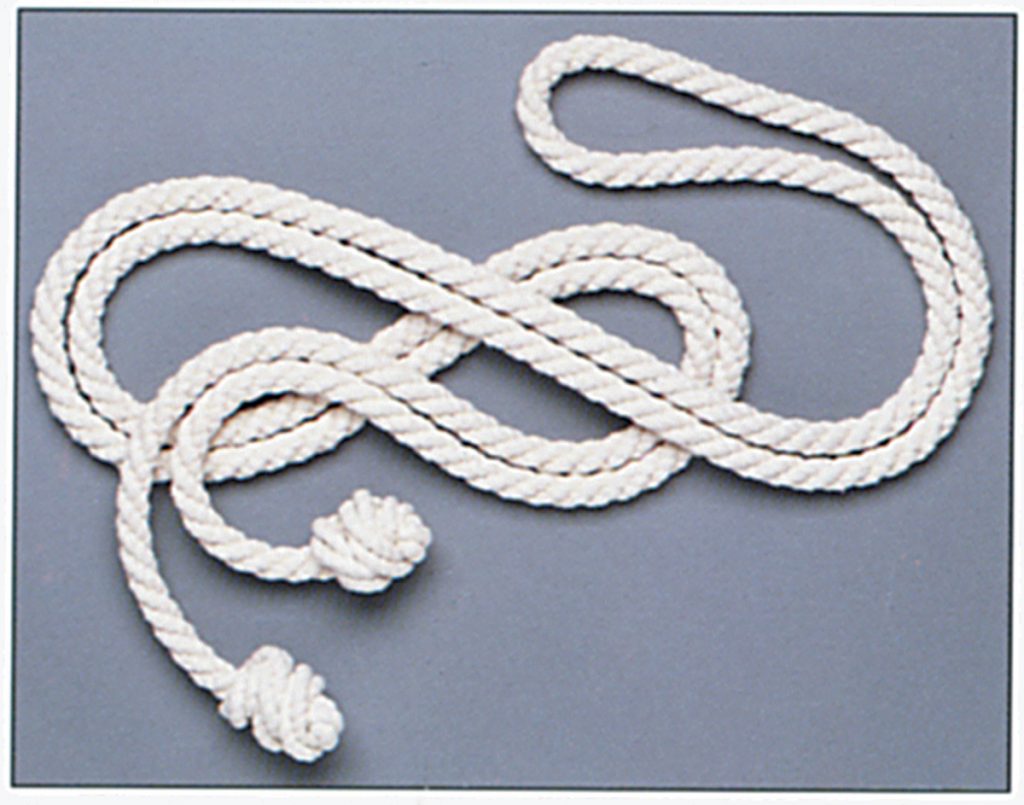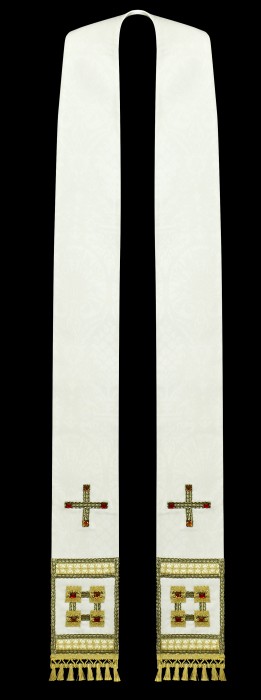
An odd get-up – thinks a person brought up outside the Christian tradition. But it has its deep meaning . . . .
An alb girdled with a cincture (i.e. a belt, today a rope), a stole and chasuble. The attire of a priest celebrating Mass. Strange? Each element of this outfit has its significance. And the whole together also has one – but more specifically what?

The alb – the translation from Latin is simply “white” – it is a simple ankle-length robe with sleeves. Whether it derived from a Roman tunic or something else doesn’t really matter. The important thing is that it is the most simple robe and that it is white. It brings to mind the sign found in the letter to the Church of Sardis from John’s Apocalypse:
Yet you have still a few names in Sardis,
people who have not soiled their garments;
and they shall walk with me in white,
for they are worthy.
He who conquers shall be clad thus in white garments,
and I will not blot his name out of the book of life;
and I will not blot his name out of the book of life;
I will confess his name before my Father and before his angels. (Ap 3)
Then the martyrs receive white garments, who are to rest and wait: “until the number of their fellow servants and their brethren should be complete, who were to be killed as they themselves had been” (Ap 6). And last but not least we have the apocalyptic vision of John which represents the triumph of God’s elect (Ap 7:9nn).
After this I looked,
and behold, a great multitude
which no man could number,
from every nation, from all tribes and peoples and tongues,
standing before the throne and before the Lamb,
clothed in white robes,
with palm branches in their hands,
and crying out with a loud voice,
“Salvation belongs to our God who sits upon the throne,
and to the Lamb!”
And all the angels stood round the throne
and round the elders and the four living creatures,
and they fell on their faces before the throne
and worshiped God, saying,
“Amen!
Blessing and glory and wisdom and thanksgiving
and honour and power and might be to our God for ever and ever! Amen.”
Clothed in white robes . . . This is why a white robe is received by the newly baptised during the rite of baptism: he/she is now a victor. This is why white is in the dominant colour for first Holy Communicants and the liturgical colour: a white garment is the symbol of those who thanks to Christ are victorious. And so it also the basic significance of the priest’s (white!) alb.

The cincture, or belt? Over the centuries many meanings have been found in it. Among other things it was seen as a sign of restraint, renunciation, and control over bodily lusts. But the meaning of this sign is probably simpler. It is a sign of readiness. To work, to setting out on the way. But why? A long, down to the ankles robe hinders moving around. At rest it’s no bother, but at work or on the road – yes. This rope in practice was to prevent the robe dropping down around the feet while working or travelling. And it brings to mind the evangelical call of Jesus:
“Let your loins be girded and your lamps burning, and be like men who are waiting for their master to come home from the marriage feast, so that they may open to him at once when he comes and knocks. Blessed are those servants whom the master finds awake when he comes; truly, I say to you, he will gird himself and have them sit at table, and he will come and serve them” (Luke 12:35-37).
Servants girded their waist because they were to serve their master. The master girds himself to serve the servants. The girding of priest’s waist therefore reminds him that what he does in celebrating Mass is a service. The priest is the servant of God and of the people of God . . .

There is still the stole, bringing to mind the words of Jesus about the easy yoke and light burden. The yoke is what is placed on an animal when it is to do work. To pull a heavy load, to pull a plough. The priest also took upon himself a yoke. The yoke of being a servant . . .
And at the end there is also the chasuble. In history, it has gone through many forms, for example the pre-conciliar resembled a piece of armour, a breastplate. But in its origin and also today the most often used form was simple . . . a cloak or cover. So, we know this form although as a rain cape, right?
A rope girding a robe, a cloak. On the feet – shoes are obligatory! The stole we’ll leave aside for now. But when the bishop celebrates the Eucharist – there’s still the crozier in his hand. It’s impossible not to notice: this attire seems to come straight from the story of Israel’s exodus from Egypt.
“Then they shall take some of the blood, and put it on the two doorposts and the lintel of the houses in which they eat them. They shall eat the flesh that night, roasted; with unleavened bread and bitter herbs they shall eat it. . . . In this manner you shall eat it: your loins girded, your sandals on your feet, and your staff in your hand; and you shall eat it in haste. It is the Lord’s passover. For I will pass through the land of Egypt that night, and I will smite all the first-born in the land of Egypt, both man and beast; and on all the gods of Egypt I will execute judgments: I am the Lord” (Exodus 12: 7-8,11-13).
Girded, sandals on the feet and staff in hand. Because they were setting off on the road. They went from slavery in Egypt to the Promised Land, to the country flowing with milk and honey. And the priest today . . . After all, Jesus established the Eucharist during the Passover meal, right? The Eucharist is a new Passover, a new exodus. Now not from the slavery in Egypt through the Red Sea to the Promised Land, but from the slavery of sin and death through the waters of baptism opened up by Jesus’ death, to heaven. And the eucharistic banquet is a the new form of that meal from centuries before: the banquet of the new exodus. A memorial and making-present the victory of Jesus of sin, death and Satan. And so we are nourished by the Body of Christ, the new Lamb, so that we don’t stagnate on this road . . .
So, the priest’s vestments are really the attire of a pilgrim. Celebrating the Eucharist, he sets out on the road. Prosaically – from the sacristy to the altar symbolising Christ. It reminds us that we are all continually on the road to Christ; although He lives in us and among us (as the Holy Spirit) we still have to constantly make the effort to reach Him. Even more sublimely – it reminds us that we are still on the way to our heavenly homeland. Already liberated but still not in our Promised Land. In this context the Bread of Life we consume during Mass appears more clearly as the Bread of Pilgrims . . . Walking and processions will be the subject of a future part of this cycle on ‘signs’. However, it’s impossible not to notice: in the priest’s get-up stands a man setting out on the road. And it’s no coincidence.